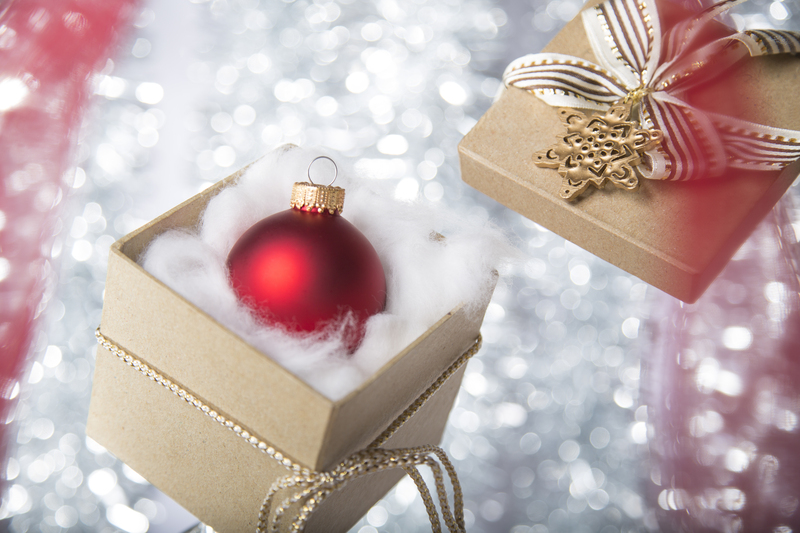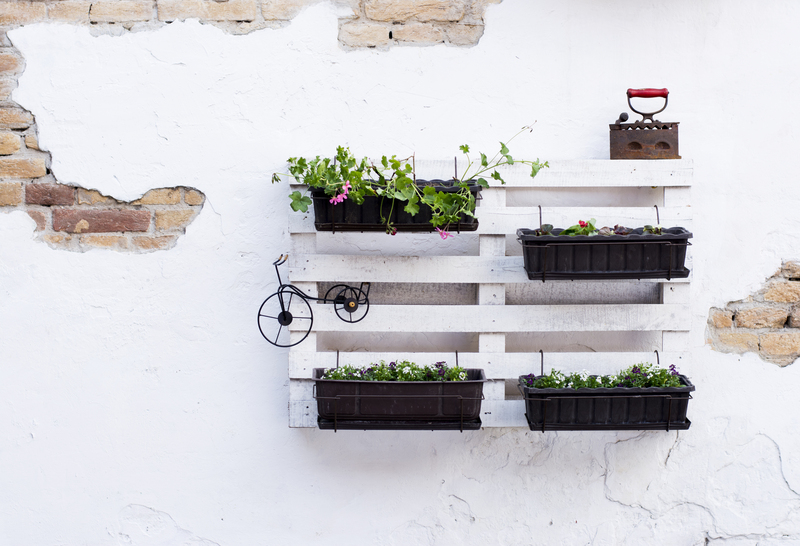Simple Ways to Integrate Sustainable Packaging and Cardboard Disposal
In today's world, environmental sustainability is more critical than ever, and the way we package products and handle waste has a direct impact on our planet. Sustainable packaging and efficient cardboard disposal methods play a vital role in reducing pollution and conserving resources. Whether you are a business owner, e-commerce retailer, or eco-conscious consumer, adopting green packaging solutions and proper cardboard recycling practices is both easy and impactful.
Understanding Sustainable Packaging
Before exploring practical ways to integrate sustainability, it's essential to understand what sustainable packaging is. Sustainable packaging refers to the use of materials and design strategies that minimize environmental impact throughout a product's lifecycle. This typically means using recyclable, compostable, or reusable packaging made from renewable or recycled resources.
- Reduces environmental footprint
- Minimizes waste sent to landfill
- Promotes responsible resource use
Why Sustainable Packaging Matters
The packaging industry is a significant contributor to global waste, with cardboard boxes accounting for a large percentage of packaging debris. By integrating sustainable packaging solutions and enhancing cardboard box recycling efforts, businesses and consumers can dramatically reduce waste and support a healthier planet.
Key benefits include:
- Lower carbon emissions
- Reduction in raw material consumption
- Improved brand image
- Potential cost savings over time

Simple Ways to Integrate Sustainable Packaging Practices
1. Choose Eco-Friendly Packaging Materials
One of the simplest ways for companies and individuals to adopt sustainable packaging is by choosing eco-friendly packaging materials. Switch to:
- Recycled cardboard boxes
- Biodegradable packing peanuts
- Compostable mailers
- Plant-based or mushroom packaging
- Minimalist designs to reduce material usage
Always look for certifications such as FSC (Forest Stewardship Council) or SFI (Sustainable Forestry Initiative) when purchasing cardboard packaging. These labels ensure that the materials come from responsibly managed forests.
2. Minimize Packaging Size and Weight
Right-sizing your packaging not only saves money but also cuts down on resource use and shipping emissions. Use boxes and protective materials that are just big enough for the product, eliminating unnecessary waste.
Benefits:
- Reduces transportation emissions due to lighter loads
- Decreases overall packaging costs
- Improves customer satisfaction with less clutter
3. Incorporate Reusable Packaging Solutions
Reusable packaging isn't just good for the earth--it can enhance brand loyalty. Offer packaging that your customers can use multiple times, such as sturdy tote bags, refillable containers, or collapsible shipping boxes.
- Encourages repeat business
- Reduces single-use packaging waste
4. Use Water-Based and Soy-Based Inks
Traditional inks are derived from petroleum and can be harmful to the environment. Opting for water-based or soy-based inks for printing on boxes or bags supports sustainable packaging. These alternatives are less toxic, biodegradable, and help improve recyclability.
5. Promote Compostable and Biodegradable Packaging
Offering compostable packaging solutions for small items or food delivery can dramatically decrease waste going to landfills. These materials decompose naturally and enrich the soil, making them an excellent choice for eco-conscious brands.
- Starch-based bags
- Bamboo or palm leaf trays
- Biodegradable films and wraps
Best Practices for Cardboard Disposal and Recycling
Proper cardboard disposal is just as important as the materials you choose. Cardboard is one of the most widely recycled materials, but it requires correct handling to ensure it can be efficiently processed.
How to Recycle Cardboard Effectively
-
Flatten Boxes Completely
Breaking down boxes makes them easier to transport, conserves space in bins, and ensures efficient processing at recycling plants. -
Remove Non-Cardboard Materials
Eliminate packing tape, labels, and non-paper inserts before recycling, as these can contaminate the recycling stream. -
Keep Cardboard Dry and Clean
Soiled or wet cardboard can't be recycled. Store used boxes in a dry area and avoid using them for greasy food or liquids. -
Use Local Recycling Programs
Check with local curbside recycling programs or drop-off centers to make sure your cardboard is recycled properly in your community.
Reuse Before You Recycle
Contrary to popular belief, the best option isn't always immediate recycling. Upcycling or reusing boxes--for storage, moving, kids' crafts, or as donation containers--helps extend their life and reduces the need for new materials.
Composting Cardboard at Home
Did you know cardboard can be composted? Uncoated, non-glossy boxes--especially corrugated cardboard--are excellent for composting. Tear them into small pieces, combine with green compost materials, and they'll break down naturally, enriching your soil.
Sustainable Packaging for Businesses and E-commerce
For brands and businesses, embracing sustainable packaging strategies is both a responsible and profitable move. Here are quick tips for companies seeking to integrate green packaging and improve cardboard disposal:
Conduct a Packaging Audit
Review existing packaging materials, product sizes, and shipping processes to identify opportunities for sustainability improvements. Focus on eliminating unnecessary layers and transitioning to recycled cardboard or biodegradable alternatives.
Implement Take-Back or Recycling Programs
Offer customers incentives to return packaging for reuse or participate in cardboard recycling programs. Many consumers are willing to contribute if provided with accessible options.
Educate and Engage Customers
Clearly communicate your commitment to eco-friendly packaging and provide tips for cardboard disposal. Use your website, emails, and labels to promote proper recycling and composting practices.
Collaborate with Green Suppliers
Build partnerships with suppliers committed to sustainable forestry practices, recycled materials, and ethical production methods. Purchase packaging certified for sustainability.
Track Your Sustainability Metrics
Establish clear goals for waste reduction, recycling rates, and customer participation. Monitor progress and celebrate milestones to foster ongoing commitment throughout your company and customer base.
Integrating Sustainable Packaging in Daily Life
Even individuals and families can make a difference by adopting searchable, easy-to-implement changes:
- Choose products with minimal or recyclable packaging
- Reuse shipping boxes for storing household items
- Get creative and upcycle cardboard for art projects, garden mulch, or furniture moves
- Encourage local retailers to offer recycling-friendly packaging
Innovative Trends in Sustainable and Cardboard Packaging
The packaging industry continues to innovate, creating new solutions for eco-friendly and recyclable packaging. Advancements include:
- Zero-waste packaging systems for grocery and meal delivery
- Edible packaging for food products
- Improved biodegradable films and barrier coatings
- Technology for easier cardboard break-down and sorting
Staying updated on these trends makes it easier for everyone to make the shift towards a circular economy, where resources are reused and recycled as much as possible.

Overcoming Common Challenges
Adopting more sustainable packaging and improving cardboard box disposal can face several obstacles, such as:
- Lack of access to recycling facilities
- Misconceptions about cost
- Limited availability of green packaging suppliers
The key is to start small. Every simple step--like flattening cardboard or switching to recyclable mailers--adds up to significant change.
Conclusion: Start Today with Simple, Sustainable Packaging Solutions
Integrating sustainable packaging and effective cardboard disposal into your daily routines isn't just good for the environment--it can lead to cost savings, improved brand reputation, and a cleaner community. Whether you're a business leading the way with green packaging or a consumer seeking to cut down on waste, the small steps count.
Embrace eco-friendly packaging options, practice proper cardboard box recycling, and inspire others to join the movement. With a bit of effort and creativity, sustainable packaging and cardboard disposal can easily become a natural part of your life--and pave the way towards a healthier planet for future generations.
Frequently Asked Questions (FAQ)
-
What is the most eco-friendly way to dispose of cardboard?
The best method is to first reuse cardboard whenever possible. If reuse isn't feasible, recycle clean, dry cardboard through your local recycling program. For composting enthusiasts, non-coated cardboard can be shredded and added to home compost bins. -
Are biodegradable packaging materials always better?
Not always. Look for certifications and make sure the materials can break down in your compost system. Sometimes, recyclable (rather than compostable) packaging is more practical depending on local facilities. -
How can businesses encourage customers to recycle packaging?
Provide clear instructions, use recycling symbols on packages, offer incentives for returned packaging, and communicate sustainability goals through every channel.
Ready to make a difference? Start today by adopting sustainable packaging practices and responsible cardboard disposal, and watch your positive impact grow--one box at a time.



